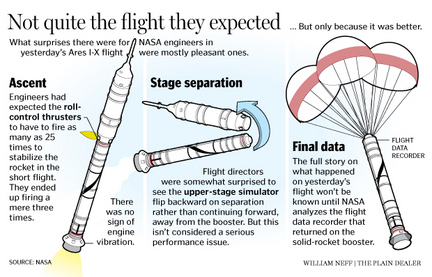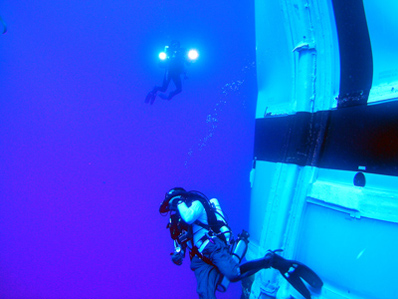radarredux":i5ha0vwg said:
aphh":i5ha0vwg said:
What I described is clearly visible in this video:
http://www.youtube.com/watch?v=4lgaW4piSus (at 02:30).
Yeah, that was pretty scary, just as they are doing separation.
Is there much/any experience with separation from a solid rocket first stage? I'm only familiar with solid rocket motors as boosters.
Yup! Everytime you launch a Minuteman or Poseidon/Trident ballistic missile. It has been about 40 years, so my recollections aren't all that clear on details, but IIRC they ignite the upper stage a couple of milliseconds
before the sep ring fires. The pressure buildup in the interstage helps insure separation. Same sort of "fire-in-the-hole" was done with the between the 1st and 2nd stages of the Titan liquid boosters. (Note: Titan 34D and IV used SRM's which fired at liftoff (aka "Stage Zero"), but the 1st stage ignited at altitude after boosters separated.)
Since the Ares I is an in-line design, you might be able to use thrust termination ports on the 1st stage. When the propellant grain burns down to a certain point, it uncovers "tunnels" to ports in the side of the forward end of the stage. When the guidance system senses tailoff of thrust, it fires linear shaped charges around round ports in the side of the rocket. Pressure inside the rocket blows the port covers off. The total area of the ports is greater than the area of the nozzle throat. The result is that you get retrograde thrust which helps back the "burned out" stage from the rest of the vehicle. Ports are arranged equally around the sides of the booster, something you can't do with the Shuttle SRB's as the ET and the orbiter wings would be impinged with the port covers and the hot gases of the rocket.
Of course, such things add weight to the vehicle, but that's better than playing bumper-tag with the 1st stage! :roll:
Anybody hear if the chutes deployed properly? Wondering if the alleged contact damaged the frustum and/or the chute packages. If the chutes worked okay, congrats to Pioneer (whatever they are called now...used to be Pioneer Parachute)!
So far as this whole test is concerned, as many of you know from my prior posts, here and elsewhere, I DETEST solid rockets for use with high value (human) payloads! Ya can't turn 'em off! (The last bit of telemetry received from Challenger indicated the Main engines were trying to shut themselves down, having sensed fuel starvation after the ET was destroyed!) Having said that, I am glad the test went off. ANY data you get that either validates or disproves computer modelling or wind tunnel data!
Frankly, I'd rather see the use of EELV's, Falcon 9, or...better yet...Direct or something else, using LIQUID PROPELLANTS!
But, let's not jump NASA for the results of this test...at least, not yet!
Ad LEO! Ad Luna! Ad Ares! Ad Astra!





